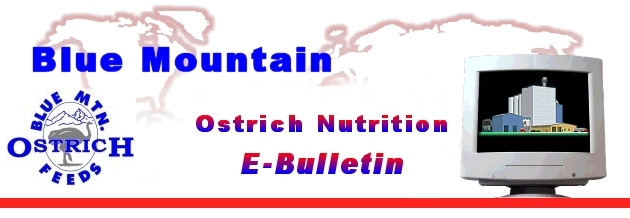

January 5, 2003
Bulletin #88
Table of contents:
Bulletin of the Month
Ostrich Industry Review of 2002
By: Fiona Benson, Blue Mountain International
Our e-mail address
Subscribe Unsubscribe information
Bulletin of the Month
Ostrich Industry Review of 2002
It is hard to believe that yet another year has come to an end and it is time once more to summarise progress made during the year of our immature industry.
Last year, I reported the increased demand for meat and the improved prices being achieved for meat. This was as a direct result of BSE becoming more prevalent throughout Europe and consumers seeking alternative meat sources that they can trust. This demand is reported to have fallen away. Did the demand really fall away, or was the industry failing to supply? There is a clear message coming through on the need for Consistency in Quality, Consistency in Supply and in sufficient volume.
There was a statement made by a South African Processor at the South African conference in October that I believe is extremely significant:
This particular processor is involved in the marketing of skins so well worthy of note given the continual references by some that we have an oversupply. This same processor went onto point out to delegates just how small our levels of production are when compared to other livestock specie and that with such low levels of production there are many markets that we simply cannot access due to the low volume of production. This same point has been highlighted as a reason for the formation of the NRPC (National Ratite Producers Cooperative) in the United States to coordinate the current fragmented production throughout the United States to meet the increasing demand for our products.
2002 has also seen the formation of the World Ostrich Association as another positive move towards advancing the industry towards becoming a mainstream livestock production industry. In 1999, I reported on the Strategic Analysis session that was held in Pretoria and resulted in some clearly defined strategies that required implementing. That Association never implemented one of the strategies. The WOA now has Committees in place to establish basic standards and started work on these projects.
In 1995, I was presented with a number of reports commissioned by a South African Bank to enable their managers to assess the degree of risk if lending to a farmer or company involved in Ostrich Production. When reviewing events of 2002, I am sure readers will agree that the following statements from these documents are very relevant:
When reading the above, during 2002 there have been a number of comments that when put in context to the above statements may make a little more sense? Out of this context of course, they make no sense whatsoever. Comments such as:
 |
Over the years, Blue Mountain has published the results of many trials and studies. Improvements in computer technology, and availability to computers by most readers, enabled a change of format for the bulletins in 2002. The topics covered during the year 2002 included: 1. Age of Slaughter/Skin Acceptability, Bulletin No. 79: A study to prove the impact of Nutrition and Management as well as Age on the Maturity of Ostrich skins. This is particularly relevant given the fact that the SA industry in general continue to believe that the skins cannot be mature unless birds are 12-14 months of age. The commercial implications of slaughtering at 9 months birds with greater meat yields, than is the current norm, with skins of acceptable quality at that age are very significant indeed.
Batch 1

2. Potential Meat Yield of Ostrich, Bulletin No. 81: A study discussing the Potential Meat yield of Ostrich proving that the accepted "norm" falls below results achieved in a trial carried out in 1991 using rations designed for a different specie. It also proved that when working with rations designed for Ostrich with production nutrition in mind, meat yields can be as much as double those currently accepted as the normal.
Comparative Muscle Weights
(1 = Average South African Muscle Weights) (2 = Texas A&M Research) ( 3 = Average From BM Cutting Sheets)

3. Economics of Processing Ostrich, Bulletin No. 82: This study demonstrated the HUGE variations currently experienced on production lines and the economic benefits to the producer and processor when birds are presented with greater meat yields with more consistentency.
Comparative Weights Individual Filet Muscles
Muscle names as per US Meat Chart
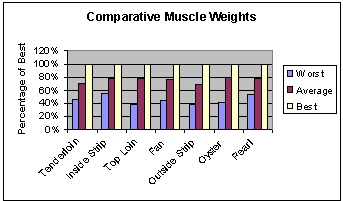
4. Influence of Genetics, Bulletin No. 87: Since the end of the last World War other specie have made tremendous improvements such as Dairy Cattle more than doubling milk yields; Poultry and Pig production slashing slaughter ages; all major meat producing specie producing greater consistency of carcass, meat yields and quality. This has been achieved by a combination of Genetic improvement programs, nutritional technology combined with high standards of Feed Management and Farm Management. This bulletin discussed how these principals apply to Ostrich.
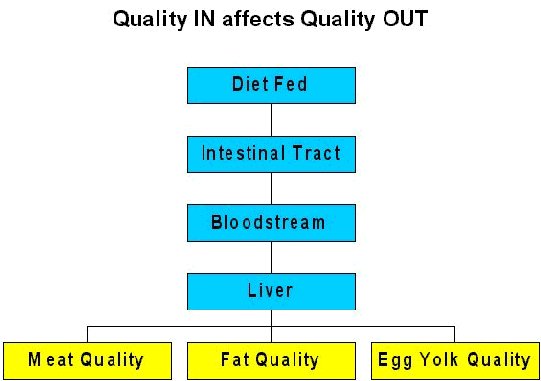
 |
5. Ostrich Nutrition and Health, Bulletin No. 80: Very significant advances have been made in nutritional technology over the past 20 years with the introduction of O.V.N. (Optimum Vitamin Nutrition). It is well documented how this technology has virtually eliminated many perceived health and production difficulties in other species. This bulletin discussed the impact of O.V.N. and other new technology as applied to Ostrich Production Nutrition. There are many comparative photographs to illustrate the healthy Ostrich from the less healthy ostrich.
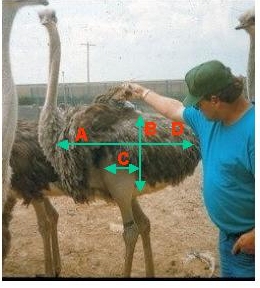 |
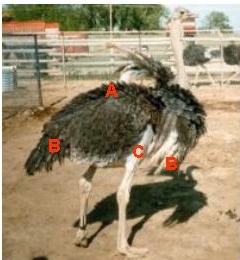 |
|
| Prime Quality Slaughter Bird | Fat Slaughter Bird With No Meat |
6. Malnutrition in Ostrich, Bulletin No. 86: This bulletin proved the huge variations currently seen in Ostrich growth rates and proved the clear evidence of malnutrition currently prevalent in our industry.
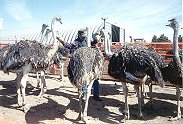 |
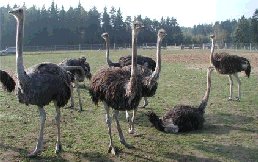 |
|
| 6 month old chicks Mid-USA, Cold Winters |
12 month old chicks Poland, Cold Winters |
7. Performance Tracking Software: Blue Mountain has now released a Farm Management Software Program that is designed to track progeny performance. The program tracks weight gains, feed intake, feed conversion, feed costs, parentage and many other features. It allows tracking by batch as well as by pen, which enables reporting of progeny from different breeders to be identified even if raised in the same pen as progeny from other breeders. If eggs or chicks are sold, the buyer can report back to the breeder the performance of the progeny. This program can be downloaded at:
Conclusion
Whether or not the original South African Industry wish to contain the industry, it is clear that this is no longer possible. It is acknowledged that the skin market as it was, is now gone. New markets are opening up for the skins and when produced correctly, we have a highly marketable meat. When raised correctly we have a specie that is the most feed efficient of any red meat production specie. As a result, production is developing in many countries of the world. The Cycle of breeder market boom, collapse and onward selling to new breeder markets is coming to an end.
There are a dedicated few in each country now making slow progress into a production market. The World Ostrich Association is to be welcomed to develop an environment and infrastructure for sustainable growth through improved channels of communication throughout the industry, establishment of Standards and dissemination of information.
The South African Industry also will benefit from the growth of the industry. It is almost a decade since deregulation with the industry remaining fragmented and volatile and as illustrated above, limited in its ability to develop markets as a result of poor levels of production on farm. Over the past decade, the South African farmer has seen their income per bird fall to 20% of the US Dollar value in 10 years. The devaluating Rand has masked this severe drop in price and the recent firming of the Rand must be putting farmers and processors under severe pressure and modernisation of production methods will be essential to remain competitive.
The three "As" of marketing Awareness, Acknowledgement and Action can be applied to progress of our industry. Most all are Aware of the problems, 2002 I would suggest has seen a progression from Acknowledging them to some now taking ACTION to provide solutions. If there are any still refusing to acknowledge that we have a New Ostrich Industry slowly being developed, then it is time to question their motives.
Wishing everyone a Happy New Year and looking forward to the continued progress for the industry for 2003.
The End
Click to return to Contents Page
 |
Contact Information:
If you have any Bulletin Topics you would like us to consider for publication in a future E-Bulletin, e-mail your information to
. We are always interested in hearing your ideas about the value of this E-Bulletin, or whether you have any problems viewing this document.
If you would like to discontinue your subscription to this E-Bulletin, or if you have additional e-mail addresses to add to our subscriber list, please visit the following page on our website and use the automated form to “subscribe” or “unsubscribe”: www.blue-mountain.net/feed/bulletin.htm
Also check out our web site at www.blue-mountain.net for feature articles addressing Ostrich Nutrition, Feeding Management, and Ostrich Farm Management.
Click to return to Contents Page
 |
Blue Mountain Ostrich Nutrition E-Bulletin © January 2003
Return to Bulletin Menu